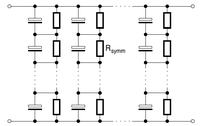unavezmasysale
Member level 2
Dear,
I need to rectify the output of a commercial inverter (Chinese - 12V to 220V - 250W) and then filter it to have a DC voltage.
The rectifier works perfect, but when I connect two capacitors in series to achieve the necessary voltage [(220uF / 200V) x 2 series=> 110uF / 400V] the output became zero.
Which is the effect that the capacitors generate?
Can anyone help me?
Thanks in advance.
I need to rectify the output of a commercial inverter (Chinese - 12V to 220V - 250W) and then filter it to have a DC voltage.
The rectifier works perfect, but when I connect two capacitors in series to achieve the necessary voltage [(220uF / 200V) x 2 series=> 110uF / 400V] the output became zero.
Which is the effect that the capacitors generate?
Can anyone help me?
Thanks in advance.












